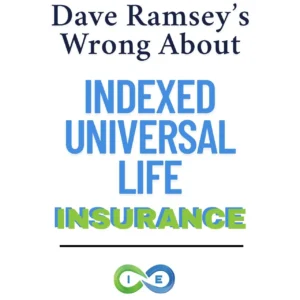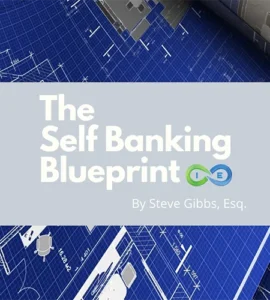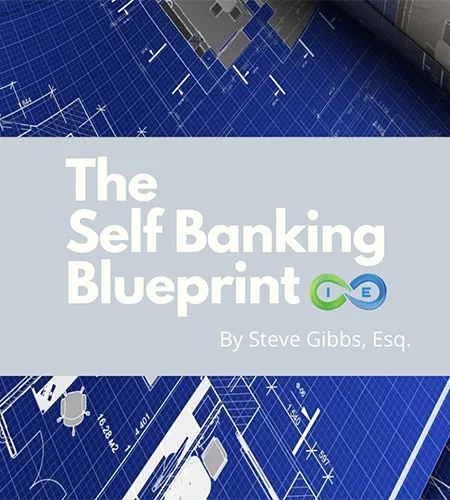Kyle Busch’s Pacific Life lawsuit alleges something worse than broken IUL—intentional design choices that maximized commissions at his expense. Whether that’s true or not, the technical problems are identical to what we see in hundreds of failed policies: unrealistic projections, poor architecture, and zero monitoring. We’ve helped clients implement IUL policies that perform as projected because we follow three non-negotiable principles. Here’s what went wrong and what ‘done right’ actually looks like.
Quick Summary
What happened: Kyle Busch paid $10.4M in IUL premiums across multiple Pacific Life policies purchased between 2018 and 2022, with the portfolio expanding from two initial PDX policies to a total of four policies, including a 2022 internal exchange that generated an additional $3.1 million in premiums and reset commission charges.
Why it matters: This wasn’t an IUL product failure—the complaint alleges intentional wealth extraction through poor design. Either way, the technical problems are fixable.
Key lesson: Three principles separate successful IUL from disasters: honest projections, proper design, and active management.
Why Kyle Busch’s Story Matters (But Not For the Reasons You Think)
When two-time NASCAR Cup Series champion Kyle Busch filed an $8.5 million lawsuit against Pacific Life Insurance Company in October 2025, headlines screamed about IUL being a “financial trap.” After paying $10.4 million in premiums between 2018 and 2022, the Busches suffered net losses exceeding $8.58 million.
Here’s what the headlines got wrong: This isn’t an IUL problem—it’s a design problem.
We’ve worked with hundreds of clients who use indexed universal life insurance to create tax-free retirement income that performs exactly as projected. The difference between their success and Kyle Busch’s disaster comes down to three critical design principles that most agents either don’t understand or choose to ignore.
When IUL is designed properly—with realistic projections, optimal policy architecture, and ongoing monitoring—it’s one of the most powerful tools available for creating sequence-of-returns protection and tax-advantaged retirement income. When it’s designed poorly (as Kyle’s apparently was), it becomes exactly what he called it: “a financial trap.”
Let’s break down what went wrong and, more importantly, what “done right” actually looks like.
In This Article:
What Went Wrong: The Three Design Failures
According to the lawsuit filed in Lincoln County, North Carolina, Kyle Busch was promised that by paying $1 million per year for five years, he could withdraw $800,000 per year starting at age 52—tax-free, for life. The policies were marketed as “self-funding” and secure.
Instead, Busch received a sixth year premium notice on what he thought was a five-year plan, and when he called his agent for answers, he got run around in circles. Most of his $10.4 million in premiums had essentially disappeared.
The lawsuit alleges these weren’t accidental design failures—they were intentional design choices that maximized commissions at Busch’s expense:
- $3.64M agent commission (35%) paid upfront before premiums hit policies
- Artificially inflated death benefits in year 1 to maximize commission targets
- Refused cost-reduction riders (ARTR) that would lower agent compensation
- 2022 internal exchange: Generated $3.1M in new premiums with $664K in first-year charges and $3.58M in projected ten-year costs, purchasing only $2.19M in projected income—zero economic benefit to Busch, just reset commission cycles
The complaint’s conclusion: ‘These policies were actively designed to fail under the weight of excessive fees and commissions… once the commission revenue had been realized.’
But here’s what matters to you: Whether the poor design was intentional (as alleged) or negligent (as some agents claim), the technical problems are identical—and fixable. The three design principles we use prevent both scenarios.
Design Failure #1: Unrealistic Projections
While the specific illustration rates used in Kyle’s policies haven’t been publicly disclosed, the complaint alleges “misleading illustrations” and “speculative projections that failed to disclose true risks and costs.” This is industry-standard code for: the projected returns were fantasy.
Our IBC pro Barry Brooksby, who has 25+ years of experience designing infinite banking policies, analyzed multiple IUL illustrations from various carriers. According to his own internal analysis, policies illustrated at 7-8% are actually missing $500,000 to $900,000+ when you do the math accounting for all costs.
Here’s one example from Barry’s analysis:
| Illustrated Rate | What Should Be There | What Actually Shows | Missing Money |
|---|---|---|---|
| 7.08% over 45 years | $2,529,000 | $1,607,000 | $918,000 |
When Barry reverse-engineered the actual rate of return, the “7.08%” illustration was really delivering 4.94%—and even that assumes positive returns every single year with no market volatility.
“This is exactly why I recommend dividend-paying whole life as the foundation for infinite banking. When you need guarantees, predictability, and zero surprises, whole life delivers what IUL can’t—contractual certainty. Kyle Busch’s outcome would have been impossible with properly designed whole life insurance.”
— Barry Brooksby, 25+ year infinite banking practitioner and author of “Live Rich Die Rich”
Pacific Life allegedly should have known these projections were deceptive. Internal emails revealed in the complaint show Pacific Life’s Regional VP acknowledged that ‘AG 49 and Code 7702 have limited how life insurance companies can illustrate their products going forward’—regulatory limits created specifically to prevent misleading IUL projections.
Instead of using conservative rates, Pacific Life marketed PDX as a workaround, positioning it as a ‘performance platform’ with ‘guaranteed multipliers’ while knowing the illustration standards existed to prevent exactly this kind of abuse.
The problem: Most agents use illustration rates of 8%, 10%, even 12% because higher numbers sell policies. But these projections ignore market reality and systematically overstate performance.
Design Failure #2: Poor Policy Architecture
The lawsuit suggests Kyle’s policies weren’t optimally designed. While we don’t have access to the actual policy documents, analysis of typical IUL structures that fail reveals common architectural problems:
- Not funded to MEC limits: Leaving cash value accumulation on the table
- No term riders: Missing opportunities to lower overall costs while increasing cash capacity
- Death benefit structure: Optimized for commission rather than cash value growth
- Wrong carrier selection: Using high-cost carriers when low-cost alternatives exist
The foundation of any cash-value policy design is simple: maximum premium into minimum death benefit. If your illustration shows larger premiums in year 1 than subsequent years, your policy probably isn’t designed optimally.
Design Failure #3: No Ongoing Monitoring
The complaint notes that Busch received a sixth year premium notice on what he understood to be a “five-year pay” policy. This reveals a critical communication breakdown about how IUL’s flexible premium structure works.
Here’s what many buyers don’t understand: Unlike whole life with a fixed premium schedule, IUL is a flexible premium product. Even with a “five-pay illustration,” the insurance company will typically send annual premium notices because you can pay premiums at any time. The “five-pay” isn’t a contract—it’s a projection based on assumed performance.
A competent advisor would have explained this upfront: “We’re illustrating five annual premiums, but if performance underperforms, you may need to pay additional premiums to keep the policy on track. We’ll monitor this annually.”
But It Gets Worse
But Kyle Busch’s situation was worse than flexible premium confusion. His agent explicitly told him in writing that his March 2020 payment was the ‘final Annual Premium’. When Busch received a sixth premium notice in fall 2023, he had every reason to be confused—he’d been promised this wouldn’t happen.
When Busch scheduled a Zoom call to understand why, Smith gave ‘shifting and evasive explanations’ over several months rather than honest answers . Until that sixth notice arrived, ‘every communication from Smith and Pacific Life had reinforced that the policies were fully funded, properly credited, and operating exactly as illustrated’.
The monitoring failure: By the time Busch discovered the problem, ‘significant damage had already occurred’. This is what happens when there’s no annual performance review, no tracking, no early warning system.
Why This IUL Failed: A Technical Analysis
“The Kyle Busch case reveals what happens when you combine three critical failures: poor carrier selection, inadequate client education, and zero ongoing monitoring.
On the carrier: Pacific Life is one of the most expensive, front-loaded IUL carriers available. Using it for cash accumulation is like trying to win a race with a boat anchor. There are carriers with 30-50% lower costs that would have produced dramatically different results with the same premium dollars.
On the communication: The ‘sixth premium notice’ confusion shows the agent never explained how flexible premium products work. Even with a ‘five-pay’ illustration, annual premium notices are normal because you can pay premiums whenever needed. Good advisors explain this upfront and monitor annually to adjust the plan.
On the projections: With a properly selected carrier that has good cap history and low cost structures, 6% illustrations are actually safe and achievable—not conservative, but realistic. The problem is when agents use expensive carriers with 8-10% projections. That’s mathematical fantasy.
I’ve designed hundreds of IUL policies that are performing at or above projections because we follow these principles. The difference between success and the Kyle Busch outcome isn’t luck—it’s carrier selection, proper design, realistic expectations, and ongoing monitoring.”
— Jason Herring, IUL Specialist, Insurance & Estate Strategies LLC
IUL Done Right: The Three Principles That Change Everything
The difference between Kyle Busch’s $8.5 million loss and the clients we work with who build substantial tax-free retirement income through IUL comes down to following three non-negotiable principles.
Principle #1: The 6% Rule (Realistic Projections = Better Results)
We cap all IUL illustrations at a maximum 6% rate—regardless of what the carrier’s “current rate” might be. Why? Because it’s the only honest way to project performance.
Here’s the mathematical reality most agents won’t tell you:
The Arithmetic vs. Geometric Problem: When agents show you 8%, 10%, or 12% projections, they’re using arithmetic averages that ignore market volatility. But you don’t earn arithmetic averages—you earn geometric returns (the actual compound growth rate).
Example: If you gain 100% one year and lose 50% the next, your arithmetic average is 25%. Your actual return? 0%. You end with the same money you started with.
After accounting for:
- Market volatility (sequence-of-returns risk)
- IUL caps and spreads
- Policy costs that increase with age
- All administrative fees
6% is optimistic relative to what the policy will actually deliver after all costs—but it’s conservative compared to the 8-12% illustrations most agents use. It’s what the policy might realistically deliver in favorable conditions. Anything above 6% is setting clients up for the disappointment Kyle Busch experienced.
Why this matters to you: When we use 6% instead of 10%, we can’t rely on fantasy returns to make the numbers work. This forces us to design better policies with lower costs and more efficient structures. Our clients aren’t surprised when they get their annual statements—they’re usually pleasantly surprised when performance exceeds the conservative 6% projection.
As Barry Brooksby notes: “The illustrations at 7-8% are already missing hundreds of thousands when you do the math. At 6%, we’re being honest about what’s achievable—and even that assumes everything goes well.”
Red flag: If an advisor shows you illustrations above 6%, they’re either ignorant of the math or hoping you are. Either way, be cautious.
Principle #2: Optimal Policy Architecture
Most IUL policies fail because they’re designed to maximize agent commission, not client outcomes. Proper IUL architecture requires specific design elements that most agents skip:
Maximum Funding to MEC Limits
The Modified Endowment Contract limit determines the maximum premium you can pay relative to death benefit while maintaining tax-free access to cash value. Policies not funded to this limit leave money on the table. For the full breakdown, visit https://www.irs.gov/pub/irs-drop/rp-01-42.pdf
How to spot this: If your illustration shows bigger premiums in year 1 than subsequent years, it’s probably not optimally funded. Proper design typically shows level or increasing premiums over the funding period.
Strategic Use of Term Riders
Adding term insurance riders to an IUL policy creates additional death benefit capacity, which allows you to pour more premium into cash value while lowering the overall cost structure. Most IUL buyers don’t even realize this is possible.
Result: More of your premium goes to cash accumulation, less goes to the cost of the base policy insurance charges.
Death Benefit Structure
IUL offers two death benefit options. Option A (level death benefit) is typically better for cash accumulation strategies. Option B (increasing death benefit) can work in specific situations but often costs more.
How we decide: Based on your specific goals—are you optimizing for cash value, death benefit, or balanced growth? There’s no one-size-fits-all answer, but there is a right answer for your situation.
Carrier Selection Matters
Not all IUL carriers are created equal. Cost structures vary dramatically—we’re talking differences that can mean hundreds of thousands of dollars over a policy’s lifetime.
Critical factors in carrier selection:
- Cost of insurance charges: Some carriers are 30-50% more expensive than others for the same coverage
- Front-loading vs. level costs: Some carriers front-load costs heavily in early years, destroying cash value accumulation. We avoid these carriers entirely.
- Cap history: Some carriers have maintained competitive caps through multiple market cycles; others constantly adjust downward
- Participation rates and spreads: The devil is in the details of how returns are credited
- Financial strength ratings: A+ or better from multiple rating agencies is non-negotiable
We work exclusively with carriers that have proven track records of low costs, competitive crediting strategies, and fair treatment of policyholders. The carrier selection alone can be the difference between a policy that works and one that fails—regardless of how well it’s designed.
Red flag: If your advisor is pushing a single carrier without showing you comparisons, they may have a commission incentive (higher payout) rather than your best outcome in mind.
Principle #3: Ongoing Monitoring & Proactive Adjustment
This is where most IUL implementations fail—and it’s exactly what happened to Kyle Busch. He didn’t realize anything was wrong until he got that unexpected sixth premium notice. By then, significant damage had already occurred.
IUL is not “set it and forget it.” It requires active monitoring because:
- Costs increase annually as you age (this is built into the product structure)
- Market performance varies, affecting credited returns
- Life circumstances change, potentially requiring funding adjustments
- Carrier crediting strategies evolve, sometimes requiring reallocation
Our monitoring process includes:
- Annual performance reviews: We request in-force illustrations each year to see where you stand versus original projections
- Cost tracking: We monitor how policy charges are trending and whether adjustments are needed
- Crediting strategy optimization: As market conditions change, we help you reallocate among available indexes
- Early warning system: If performance is lagging, we identify it years before it becomes a problem and develop action plans
- Adjustment implementation: When changes are needed, we guide you through options and execute
This monitoring isn’t “extra”—it’s essential to IUL success. When Kyle Busch couldn’t get straight answers from his agent about that sixth premium notice, it revealed the absence of this critical support structure.
The result for our clients: They know exactly where they stand, what to expect, and what actions (if any) are needed. No surprises. No run-arounds. No watching cash value mysteriously disappear.
For a detailed implementation guide, see: IUL Implementation Strategy: Start to Finish

8 Questions to Ask Before Buying IUL (That Would Have Saved Kyle Busch Millions)
If Kyle Busch had asked these eight questions before signing, he likely would have discovered the design problems before they cost him $8.5 million. Use these to qualify any IUL advisor you’re considering:
Question #1: “What illustration rate will you use?”
Red flag answer: “We’ll use the current rate of 7.5%” (or 8%, 10%, 12%)
Good answer: “We cap all illustrations at 6% maximum, regardless of carrier current rates, because anything higher creates unrealistic expectations.”
Why it matters: The illustration rate is the single biggest predictor of future disappointment. Higher isn’t better—it’s less honest.
Question #2: “Is this policy funded to the MEC limit?”
Red flag answer: Confused look, or “We don’t need to worry about that”
Good answer: “Yes, we’re maximizing your premium relative to death benefit up to the MEC limit, which is why we structure it this way…” (proceeds to explain)
Why it matters: Policies not funded to MEC limits are leaving cash accumulation on the table—which is fine if there’s a strategic reason, but there usually isn’t.
Question #3: “Have you included term riders to optimize the cost structure?”
Red flag answer: “Term riders? We don’t typically use those.”
Good answer: “Yes, we’re using [specific rider] to create additional capacity while lowering overall costs. Here’s how that works…”
Why it matters: Term riders are one of the most powerful design tools in IUL architecture. An advisor who doesn’t use them probably doesn’t understand advanced design.
Question #4: “Can you show me what happens in the guaranteed column if I stop paying premiums?”
Red flag answer: “Let’s focus on the current scenario—that’s what matters.”
Good answer: “Absolutely. In the guaranteed scenario, if you stopped paying after X years, the policy would lapse at age Y. That’s why we monitor annually and adjust as needed.”
Why it matters: The guaranteed column shows you the worst-case scenario. If your advisor won’t discuss it, they’re hiding something.
Question #5: “What ongoing monitoring and support do you provide?”
Red flag answer: “The policy is pretty self-managing. Just call if you have issues.”
Good answer: “We conduct annual reviews including in-force illustrations, cost tracking, crediting strategy optimization, and proactive adjustments as needed. Here’s our process…”
Why it matters: IUL without ongoing monitoring is a ticking time bomb. This is what destroyed Kyle Busch’s policies.
Question #6: “Why are you recommending IUL instead of whole life?”
Red flag answer: “Whole life is too expensive and has terrible returns.”
Good answer: “For most clients, we actually recommend whole life as the foundation. IUL makes sense for you specifically because [specific reasons related to your situation]. Let me show you both options…”
Why it matters: An advisor who pushes IUL for everyone probably doesn’t understand how to design whole life properly—or is chasing higher commissions.
For a detailed comparison, see: IUL vs. Whole Life Insurance: Complete Analysis
Question #7: “Can you show me historical performance data for this exact strategy?”
Red flag answer: “Every policy is unique” or relying only on backtested illustrations
Good answer: “Here’s actual performance data from similar policies over the past 10-20 years, including both strong and weak market periods. Notice the gap between illustrated and actual…”
Why it matters: Backtested illustrations always look great. Real-world performance data reveals the truth.
Question #8: “What’s your commission on this policy, and how might that influence your recommendation?”
Red flag answer: Defensiveness, evasion, or “That’s not relevant to your decision”
Good answer: “My commission is [specific amount or percentage]. Here’s why I’m comfortable with that compensation relative to the work involved and the value we’re providing…”
Why it matters: Kyle Busch’s agent made a 35% commission ($3.64 million) before his money even reached the insurance company. Disclosure doesn’t eliminate conflicts, but it reveals them.
Bonus consideration: An advisor willing to discuss compensation openly is more likely to prioritize your interests. One who gets defensive probably has something to hide.
📋 Not Sure if Your IUL is Designed Properly?
Get a free policy review. We’ll analyze whether your current IUL is on track or needs adjustment—with zero obligation.
When IUL Makes Sense (And When It Doesn’t)
IUL isn’t for everyone—and that’s okay. When used properly for the right situations, it’s a powerful tool. When forced into situations where it doesn’t fit, you get Kyle Busch scenarios.
Here’s how to know if IUL is right for you:
IUL Makes Sense When You…
- Want sequence-of-returns protection: You’re approaching retirement and need to protect against the “retire into a bear market” scenario that destroys traditional portfolio withdrawal strategies
- Seek tax-advantaged retirement income: You’ve maxed out other tax-advantaged accounts and want another vehicle for tax-free income in retirement
- Value flexibility over guarantees: You understand you’re trading the certainty of whole life for the potential upside of market participation—and you’re comfortable with that tradeoff
- Can fund properly and adjust as needed: You have the resources to fund the policy adequately and make adjustments if performance lags
- Want that extra potential: You’re educated about the risks and still want exposure to potential market gains (with downside protection) that whole life doesn’t offer
- Work with competent guidance: You have an advisor who designs policies properly, uses realistic projections, and provides ongoing monitoring
IUL Probably Doesn’t Make Sense When You…
- Want guarantees and predictability: If certainty matters more than upside potential, dividend-paying whole life is almost always the better choice
- Don’t want ongoing management: If you want “set it and forget it,” IUL isn’t for you—it requires active monitoring
- Are building your foundation: For most people, whole life should be the first cash-value policy, with IUL potentially added later as a complement
- Are working with high-commission advisors: If your advisor won’t discuss realistic projections or pushes IUL for everyone, walk away
- Can’t evaluate the design: If you don’t have the sophistication to ask the eight questions above (or hire someone who can), stick with simpler products
For most of our clients, we recommend starting with dividend-paying whole life as the foundation, then potentially adding IUL as a complement for specific situations. This gives you the stability and guarantees of whole life plus the flexibility and potential upside of IUL—without putting all your eggs in one basket.
To understand how IUL fits into a comprehensive wealth strategy, see: Using IUL with Infinite Banking
What to Do If You Already Own an IUL
If you currently own an IUL policy, don’t panic—but do take action to understand whether it’s on track or needs attention.
Get a Policy Performance Review
Request a current in-force illustration from your insurance company. This shows where your policy stands today versus original projections. You have three options:
Option 1: Do Nothing – Appropriate if your policy is performing well and guaranteed values are acceptable
Option 2: Optimize Existing Policy – Reduce death benefit to lower costs, redirect future premiums to better-designed policies
Option 3: Replace via 1035 Exchange – A 1035 Exchange allows you to move cash value to new policy if current design is fundamentally flawed
Critical: Any advisor recommending replacement should provide detailed modeling of all three options. If they won’t do this work, they’re chasing commissions, not serving your interests.
We provide comprehensive IUL policy reviews that include analysis of all three options with realistic projections. No pressure to replace—just honest assessment of whether your current policy serves you well or needs adjustment.
How to Find an Honest IUL Advisor
The Kyle Busch lawsuit and the 400+ similar cases reveal a systemic problem in how IUL is sold. So how do you find the rare advisor who will prioritize your outcomes over their commissions?
Ask These Qualifying Questions:
1. “What illustration rate will you use?”
Red flag answer: “We use the current rate, which is 7.5% (or higher)”
Good answer: “We cap illustrations at 6% to ensure realistic expectations, even if the carrier’s current rate is higher.”
2. “Do you recommend whole life or IUL as the foundation?”
Red flag answer: “IUL is always better—whole life is too conservative and low-return.”
Good answer: “For most clients, dividend-paying whole life is the better foundation. IUL can make sense as a complement for specific situations, but only after you understand the tradeoffs.”
3. “Will you show me the guaranteed column and explain when the policy might lapse?”
Red flag answer: “Don’t worry about the guaranteed column—that won’t happen” or “Let’s focus on the current scenario.”
Good answer: “Absolutely. Let me show you what happens in worst-case scenarios and what we’d need to do to prevent a lapse.”
4. “How do you get paid, and what’s the commission on this policy?”
Red flag answer: Evasiveness, defensive posture, or refusal to disclose.
Good answer: Clear disclosure of commission structure and willingness to discuss how compensation might influence recommendations.
5. “Can you show me an alternative using whole life and explain why you’re recommending IUL instead?”
Red flag answer: “Whole life is a terrible product” or “I don’t work with whole life.”
Good answer: Provides a whole life comparison and explains specific reasons why IUL might be appropriate for your situation—if it actually is.
6. “What ongoing support do you provide for monitoring and adjusting this policy?”
Red flag answer: “The policy is self-managing” or “Just call if you have problems.”
Good answer: Clear description of annual or semi-annual review process, what metrics are monitored, and how adjustments are made.
7. “Can you show me historical performance of this exact strategy—not backtested, but actual policy results?”
Red flag answer: “Every policy is different” or refusal to provide actual historical data.
Good answer: Provides real-world performance data from similar policies over 10+ years, including both good and challenging market periods.
The Competent Advisor Will Also Ask YOU Questions:
A good advisor shouldn’t just sell you what you ask for. They should qualify whether IUL is even appropriate for your situation:
- “What are you trying to accomplish with this policy?”
- “Do you understand how dividend-paying whole life works as an alternative?”
- “Are you comfortable with the uncertainty in IUL projections?”
- “Do you have the resources to adjust funding if performance underperforms?”
- “Have you considered starting with whole life as a foundation?”
If an advisor is too eager to sell you IUL without challenging whether it’s right for you, that’s itself a red flag.
For more on selecting the right carrier and policy structure, see: Best IUL Companies and What to Look For.
The Bottom Line: Design Makes All the Difference
Kyle Busch’s $8.5 million loss is tragic—but it was completely preventable. The difference between his outcome and the clients we serve who successfully build tax-free retirement income through IUL comes down to three things:
- Realistic projections (6% maximum) that create honest expectations
- Optimal policy architecture that maximizes cash value from day one
- Ongoing monitoring and adjustment that catches problems before they become catastrophic
When IUL is designed right, it’s a powerful tool for creating sequence-of-returns protection and tax-advantaged retirement income. When it’s designed wrong—with unrealistic illustrations, poor architecture, and no monitoring—you get the Kyle Busch scenario.
The choice is yours: work with advisors who prioritize volume and commissions, or work with advisors who prioritize proper design and your long-term outcomes.
Bottom Line: Should You Buy Indexed Universal Life Insurance?
Buy IUL only if you meet all these criteria: you want tax-free retirement income, you’ve maxed other tax-advantaged accounts, you can work with an advisor who uses 6% maximum illustrations, and you’re comfortable with ongoing monitoring requirements.
Ready to Explore IUL Done Right?
Whether you’re considering IUL for tax-free retirement income or you already own policies and want to understand if they’re on track, we’re here to help with education-first, honest guidance.
Get Your IUL Design Analysis
Before implementing IUL, get a personalized analysis from our banking alternative specialists. We’ll show you exactly how proper IUL design would work with your specific situation and help you understand if IUL aligns with your retirement income goals—or if whole life is a better foundation.
- ✓ See realistic 6% illustrations compared to industry 8-10% projections—understand what’s actually achievable vs. sales hype
- ✓ Discover optimal policy architecture that maximizes cash value from dollar one (most agents get this wrong)
- ✓ Get side-by-side comparison: IUL vs. whole life for your specific situation, income level, and retirement timeline
- ✓ Learn our annual monitoring process that catches problems years early—what Kyle Busch never had
- ✓ Honest assessment: if IUL isn’t right for you, we’ll tell you—even if it costs us the sale
- ✓ Review existing policies to identify design flaws before they cost you thousands (or millions)
Schedule your complimentary 30-minute IUL analysis and discover if this strategy can provide the tax-free retirement income you’re seeking—designed right from day one.
No obligation. No sales pressure. Just expert guidance to help you determine if IUL—designed with our three principles—can work for your retirement strategy.
Continue Learning:
- IUL vs. Whole Life: Complete Comparison
- Best IUL Companies: What to Look For
- IUL Implementation Strategy Guide
- Using IUL with Infinite Banking
Kyle Busch’s $8.5 million loss didn’t have to happen. With proper education, realistic 6% projections, optimal design, and ongoing monitoring, IUL can work powerfully for tax-free retirement income—but it requires all of those elements.
Don’t let what happened to Kyle Busch happen to you.





